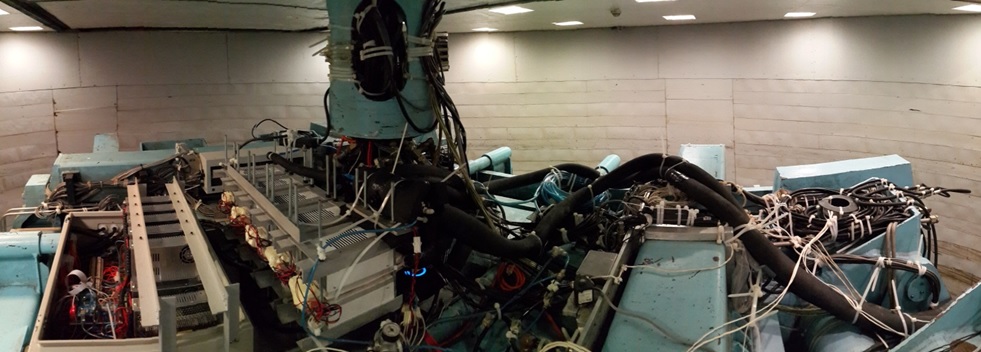Heating and cooling system
A heating and cooling system is developed to apply the operating temperature range of energy geostructures such as piles from slightly above freezing point to 50°C. The working principle of this system is based on the thermoelectric phenomenon (Peltier Effect) for the cooling process and joule heating for the heating process (heating rod). The operating principle of Peltier Effect is the creation of heat flux via a junction of two different types of conductors; electric energy is consumed in the process. The two different types of conductors are N-type and P-type semiconductors. On the other hand, joule heating is simply the process whereby heat is produced when electric current passes through a conductor. The higher the resistance of the conductor, the more heat produced; similarly, the higher the current, the more heat produced.
The system has been successfully used to investigate the behaviour of single energy pile and energy pile group in both sand and clay of different overconsolidation ratios.

Full assembly of heating and cooling system:
(a) side view; (b) front view

Heating and cooling system mounted on top of centrifuge
(for real test)
Journal Publications
- Ng, C. W. W, Coo, J. L, Gunawan, A. (2018). State-of-the-Art Research in Geo-energy and Geo-environmental Engineering: Energy Pile and Earthen Capillary Landfill Cover System. Geotechnical Engineering 49, No. 2, 1-11.
- Ng, C. W. W. & Ma, Q. J. (2019). Energy piles subjected to non-symmetrical cyclic thermal loading in centrifuge. Géotechnique Letters 9, No. 3, 173-177, https://doi.org/10.1680/jgele.18.00161.
- Ng, C. W. W., Zhang, C., Farivar, A. & Gomm, S. M. (2019). Scaling effects on the centrifuge modelling of energy piles in saturated sand. Géotechnique Letters 10, No. 1, 57-62, https://doi.org/10.1680/jgele.19.00051.
Conference Papers
- Shi, C., Van Laak, P. A., Gunawan, A. & Ng, C. W. W. (2015). Development of a heating and cooling system for centrifuge modelling of energy piles at HKUST. In The 15th Asian Regional Conference on Soil Mechanics and Geotechnical Engineering 2, No. 4, pp. 2559-2564. Kyushu, Japan: Japanese Geotechnical Society.
- Gunawan, A., Ng, C. W. W., Hanglong, L., Yonghui, C. & Ganggiang, K. (2017). Effects of cooling on the ultimate capacity of energy pile. In Proceedings of the 19th International Conference on Soil Mechanics and Geotechnical Engineering, pp. 3439-3442, Seoul, South Korea: Korean Geotechnical Society.
- Ng, C. W. W. & Ma, Q. J. (2018). Effects of pile length on the settlement behavior of floating energy piles subjected to thermal cycles. In The 71st Canadian Geotechnical Conference and the 13th Joint CGS/IAH-CNC Groundwater Conference, Edmonton, Canada: International Association of Hydrogeologists.
HKUST Thesis
- Shi, C. (2015). Centrifuge modelling of floating energy piles in saturated sand and clay. MPhil thesis, Hong Kong University of Science and Technology.
- Gunawan, A. (2017). Ultimate and serviceability limit states of floating energy pile in sand. PhD thesis, Hong Kong University of Science and Technology.
- Ma, Q. (2018). Performance of floating energy pile groups subjected to non-symmetrical cyclic thermal loading in sand. PhD thesis, Hong Kong University of Science and Technology
- Zhang, C. (2019). Scaling effects on centrifuge modelling of energy piles. MPhil thesis, Hong Kong University of Science and Technology.